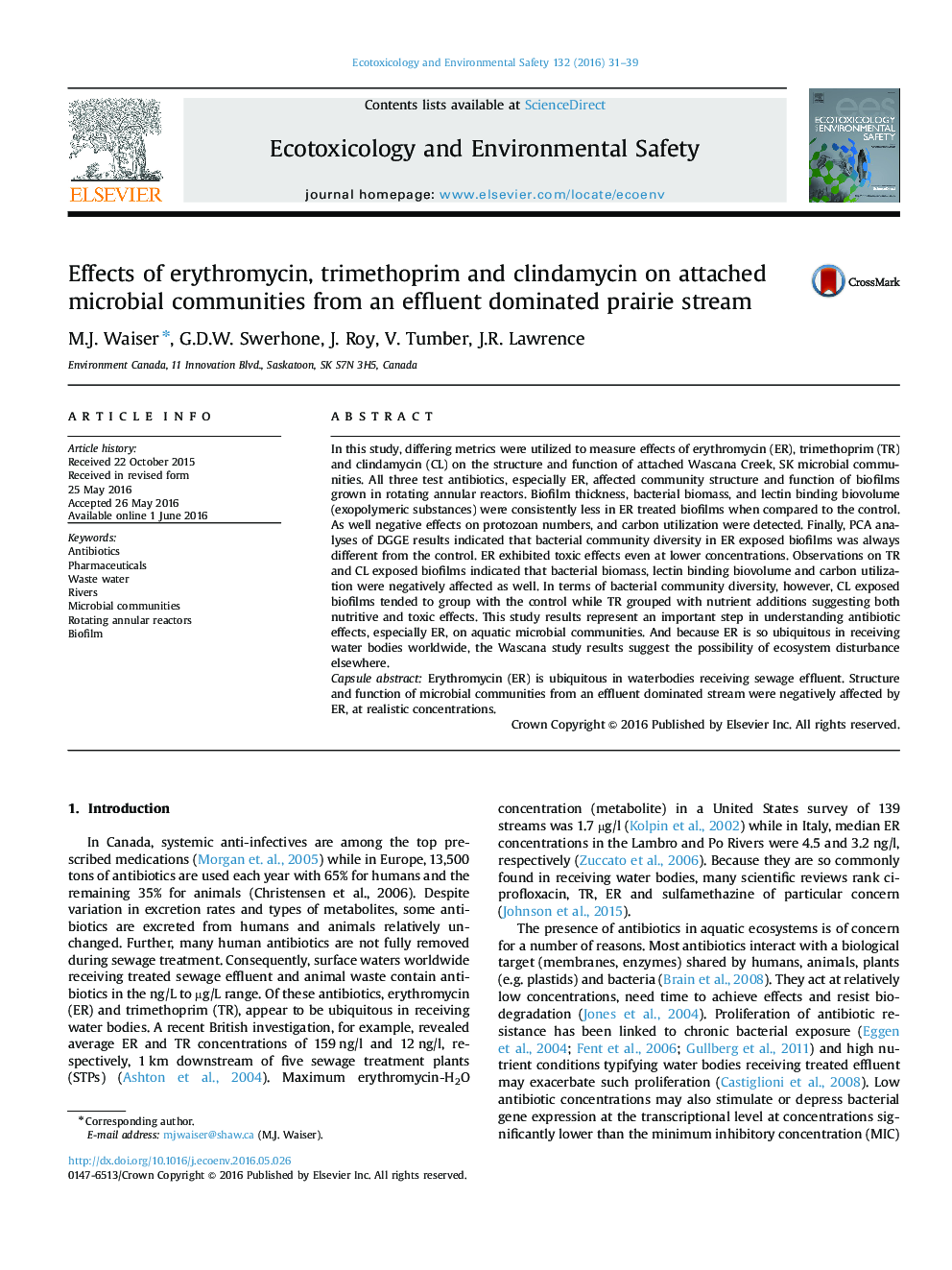| کد مقاله | کد نشریه | سال انتشار | مقاله انگلیسی | نسخه تمام متن |
|---|---|---|---|---|
| 4419106 | 1618931 | 2016 | 9 صفحه PDF | دانلود رایگان |
• Erythromycin is ubiquitous in water bodies receiving treated sewage effluent.
• Biofilms from an effluent dominated stream were negatively affected by erythromycin at environmentally realistic concentrations.
• Biofilm thickness, bacterial biomass, and exopolymeric substances were less in erythromycin treated biofilms compared to controls.
• PCA analyses of DGGE indicated bacterial community diversity in erythromycin exposed biofilms was always different from the control.
In this study, differing metrics were utilized to measure effects of erythromycin (ER), trimethoprim (TR) and clindamycin (CL) on the structure and function of attached Wascana Creek, SK microbial communities. All three test antibiotics, especially ER, affected community structure and function of biofilms grown in rotating annular reactors. Biofilm thickness, bacterial biomass, and lectin binding biovolume (exopolymeric substances) were consistently less in ER treated biofilms when compared to the control. As well negative effects on protozoan numbers, and carbon utilization were detected. Finally, PCA analyses of DGGE results indicated that bacterial community diversity in ER exposed biofilms was always different from the control. ER exhibited toxic effects even at lower concentrations. Observations on TR and CL exposed biofilms indicated that bacterial biomass, lectin binding biovolume and carbon utilization were negatively affected as well. In terms of bacterial community diversity, however, CL exposed biofilms tended to group with the control while TR grouped with nutrient additions suggesting both nutritive and toxic effects. This study results represent an important step in understanding antibiotic effects, especially ER, on aquatic microbial communities. And because ER is so ubiquitous in receiving water bodies worldwide, the Wascana study results suggest the possibility of ecosystem disturbance elsewhere.Capsule abstractErythromycin (ER) is ubiquitous in waterbodies receiving sewage effluent. Structure and function of microbial communities from an effluent dominated stream were negatively affected by ER, at realistic concentrations.
Journal: Ecotoxicology and Environmental Safety - Volume 132, October 2016, Pages 31–39
